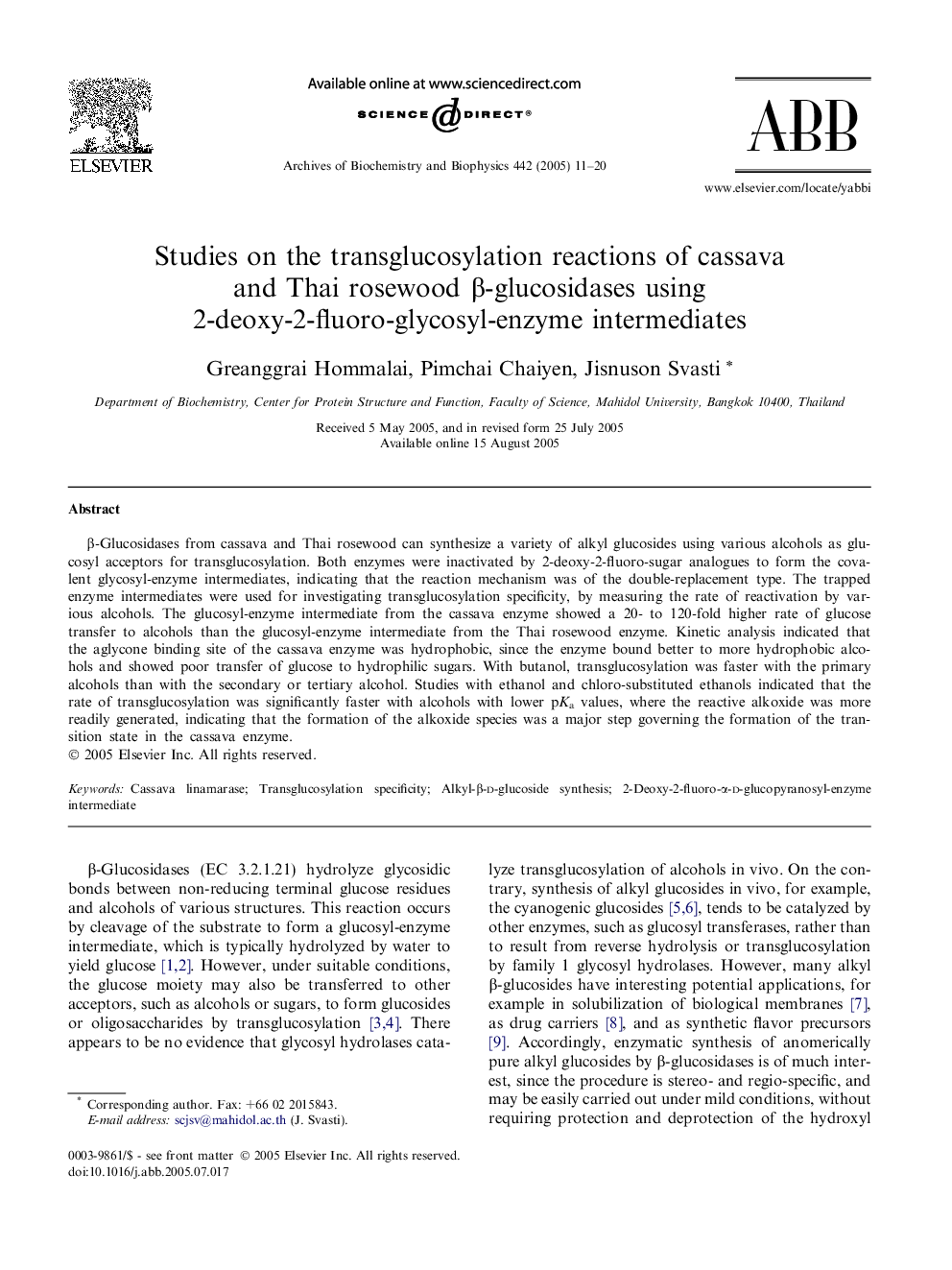| Article ID | Journal | Published Year | Pages | File Type |
|---|---|---|---|---|
| 9882105 | Archives of Biochemistry and Biophysics | 2005 | 10 Pages |
Abstract
β-Glucosidases from cassava and Thai rosewood can synthesize a variety of alkyl glucosides using various alcohols as glucosyl acceptors for transglucosylation. Both enzymes were inactivated by 2-deoxy-2-fluoro-sugar analogues to form the covalent glycosyl-enzyme intermediates, indicating that the reaction mechanism was of the double-replacement type. The trapped enzyme intermediates were used for investigating transglucosylation specificity, by measuring the rate of reactivation by various alcohols. The glucosyl-enzyme intermediate from the cassava enzyme showed a 20- to 120-fold higher rate of glucose transfer to alcohols than the glucosyl-enzyme intermediate from the Thai rosewood enzyme. Kinetic analysis indicated that the aglycone binding site of the cassava enzyme was hydrophobic, since the enzyme bound better to more hydrophobic alcohols and showed poor transfer of glucose to hydrophilic sugars. With butanol, transglucosylation was faster with the primary alcohols than with the secondary or tertiary alcohol. Studies with ethanol and chloro-substituted ethanols indicated that the rate of transglucosylation was significantly faster with alcohols with lower pKa values, where the reactive alkoxide was more readily generated, indicating that the formation of the alkoxide species was a major step governing the formation of the transition state in the cassava enzyme.
Related Topics
Life Sciences
Biochemistry, Genetics and Molecular Biology
Biochemistry
Authors
Greanggrai Hommalai, Pimchai Chaiyen, Jisnuson Svasti,
